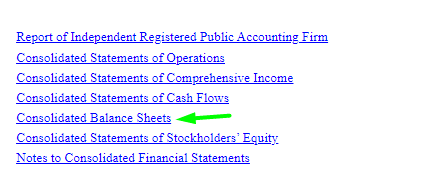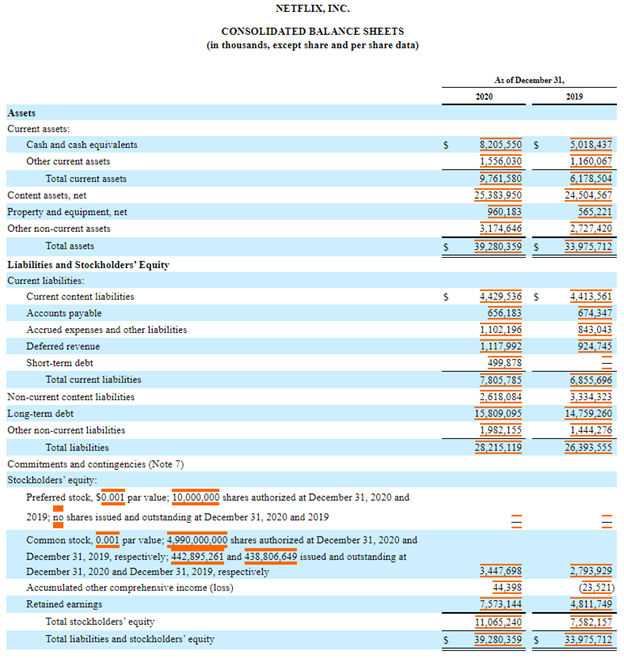
This article introduces you to a trading strategy that doesn’t require volumes, technical indicators, and price patterns. All you need to do is to be attentive to the price action. Welcome to the Imbalance tutorial.
2023-11-27 • Updated
If you have already invested in some stocks or want to do that, it is crucial to understand how to read a balance sheet. After you get this skill, you will be able to invest in stocks not by intuition but in a professional way. You will know how to find out a company's real value and predict its potential.
In this article, we will talk about the balance sheet but be aware that it’s just one of the three core financial statements which also include an income statement and a cash flow statement. All of them present written records that reveal the financial performance of a certain company.
The balance sheet knows everything. It can tell you whether a company has enough money to invest in its development and keep growing or it is deeply indebted. Overall, the balance sheet is a financial record that uncovers the company's assets (what it’s already got) and liabilities (what it owes to others). It’s called a balance sheet as each side must equal the other. Assets equal liabilities plus shareholder equity. In other words, whatever assets aren’t being used to pay off the liabilities belong to the shareholders.
Assets = Liabilities + Shareholders’ Equity
Generally, you will see assets at the beginning of the balance sheet. They are usually divided into current and non-current assets. What’s the difference? Current assets can be converted into cash within a year, while non-current assets are considered long-term assets that can take a longer time to determine their full value. For instance, current assets can consist of accounts receivable (the money not yet paid for by customers), inventories, marketable securities, and prepaid expenses. Non-current assets typically contain things like land, intellectual property, and patents.
Liabilities are usually placed after the assets in the balance sheet. Like assets, they can be divided into current liabilities and non-current liabilities by the same logic. Examples of current liabilities include rent, taxes, and wages, while long-term liabilities – long-term loans and capital leases.
Equity is essentially the leftover value after liabilities have been subtracted from assets. Equity tends to include the ownership share in the company and retained earnings (the income left after the company paid dividends).
1. The Securities and Exchange Commission (SEC) and its EDGAR website offer all sorts of balance sheet information. Search for the company you are interested in.

2. Open the 10-K annual report.

3. Find the section called ‘Consolidated Balance Sheets’.

You should see something similar to the picture below.

Source: www.sec.gov
Balance sheets list periods (usually one year) vertically next to each other. This form allows investors to compare the different periods easily and assess the company’s financial condition and operating performance.
For example, Netflix's balance sheet for December 31, 2020, lists $39.28 million in assets. In 2019, it recorded $33.98 million—they acquired $5 million in assets over that period.

Netflix increased its liabilities to $28.2 million, up from $26.4 million in 2019.

After this brief analysis, an investor can see that Netflix has total current assets of $9.76 million and total current liabilities of $7.8 million. Thus, the company has more than enough to pay off its short-term debts.
If we divide current assets by current liabilities, we’ll get the current ratio. This measurement tests short-term financial risk. Netflix has a current ratio of 1.25. Some companies have higher and lower current ratios depending on their financial structure. In general, a company with assets and debt should have a current ratio of above 1 to stay afloat.
Quick ratio: (current assets - inventories) ÷ current liabilities
Debt to equity ratio: total liabilities / total stockholders' equity
Working capital ratio: current assets - current liabilities
Net worth: total assets – total liabilities
You may notice "Retained Earnings" in the equity section at the bottom of the balance sheet. It is an important thing for investors to check. When a certain company earns some capital, it can choose to pay this money to shareholders as dividends or to keep these earnings to reinvest in its business. Thus, retained earnings are the historical profits, minus the dividends a company paid in the past.
To find out that a company has a weak balance sheet, you'll need to look for several issues. When a firm is struggling, the balance sheet will generally uncover some problems. Some of them are presented below.
Retained earnings show how much the company earned minus dividends. It is also called earnings surplus as it is the reserve capital, which a company can use for reinvesting back into the business. For example, Netflix has positive retained earnings.

If the deficit in retained earnings exceeds the amount of capital that the company has, it is a bad sign.
If we divide the current assets by current liabilities, we will get the current ratio. If it is lower than 1, it is considered low.
A high current ratio is only a welcome sign of a strong balance sheet. Here are below some other standout ratios which signal that a balance sheet is good.
Nothing else can demonstrate a strong company more than cash and short-term investments. This will not only offer coverage for current liabilities but also allow a company to return value to its shareholders.
A mortgage is one of the worst nightmares for most people, and they want to pay it off as fast as possible. Companies are no different. Long-term debt is money that a firm borrowed and has to pay back in more than one year. Sometimes, this period can reach 30 years!
Companies with low or zero long-term debt can be great choices to invest in. Examples are PayPal and Facebook.
"Intangibles" demonstrate nonphysical intellectual property and rights that a company owns. These assets generally don’t require any extra costs other than the initial development. However, the potential for monetizing those assets is huge! Great examples of intangible assets are brand names such as Coca-Cola or a logo such as Ralph Lauren. They can help sell products by themselves due to their brand recognition.
Companies with strong balance sheets are perfect for investments, but most of the time these companies are market giants which don’t show such rapid growth as some ‘young’ companies do as it’s almost impossible to support it at a constant high speed. Thus, smart investors look for companies that are working hard to improve their financial status. How to find them? Easy! These companies decrease their debt year after year and accumulate cash and equivalents over time. They have so-called "work-in-progress" balance sheets.
After reading this article, you can read the balance sheets easily and recognize whether the company has the potential to grow further or not. It can help you to build an excellent investment portfolio!

This article introduces you to a trading strategy that doesn’t require volumes, technical indicators, and price patterns. All you need to do is to be attentive to the price action. Welcome to the Imbalance tutorial.

The DeMarker Indicator was invented and described by Thomas DeMark.

This article explores the MACD + RSI trading strategy and how it can be effectively employed to identify trade opportunities in the forex market.
Click the ‘Open account’ button on our website and proceed to the Personal Area. Before you can start trading, pass a profile verification. Confirm your email and phone number, get your ID verified. This procedure guarantees the safety of your funds and identity. Once you are done with all the checks, go to the preferred trading platform, and start trading.
If you are 18+ years old, you can join FBS and begin your FX journey. To trade, you need a brokerage account and sufficient knowledge on how assets behave in the financial markets. Start with studying the basics with our free educational materials and creating an FBS account. You may want to test the environment with virtual money with a Demo account. Once you are ready, enter the real market and trade to succeed.
The procedure is very straightforward. Go to the Withdrawal page on the website or the Finances section of the FBS Personal Area and access Withdrawal. You can get the earned money via the same payment system that you used for depositing. In case you funded the account via various methods, withdraw your profit via the same methods in the ratio according to the deposited sums.
FBS maintains a record of your data to run this website. By pressing the “Accept” button, you agree to our Privacy policy.
Your request is accepted.
A manager will call you shortly.
Next callback request for this phone number
will be available in
If you have an urgent issue please contact us via
Live chat
Internal error. Please try again later
Don’t waste your time – keep track of how NFP affects the US dollar and profit!
